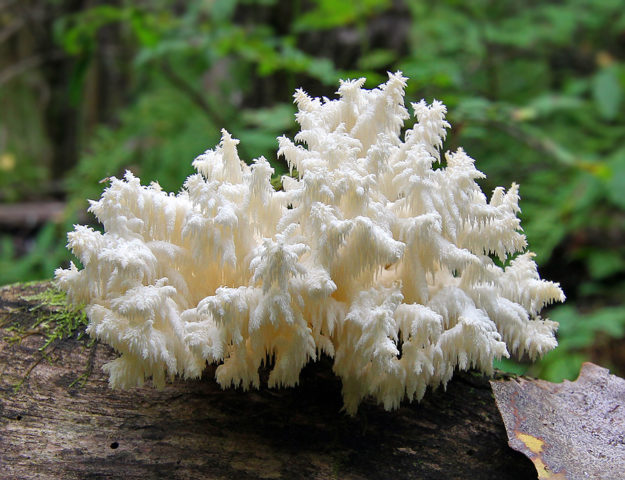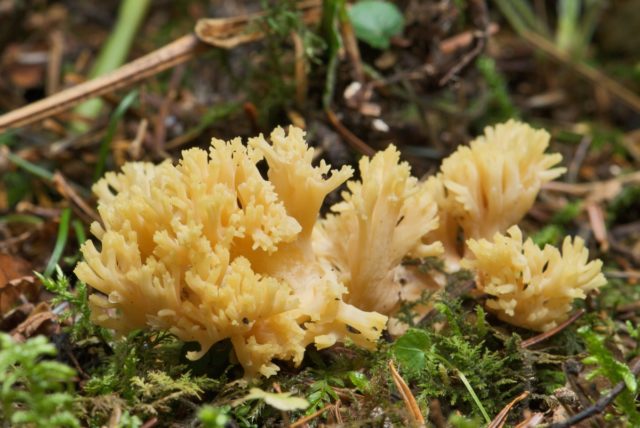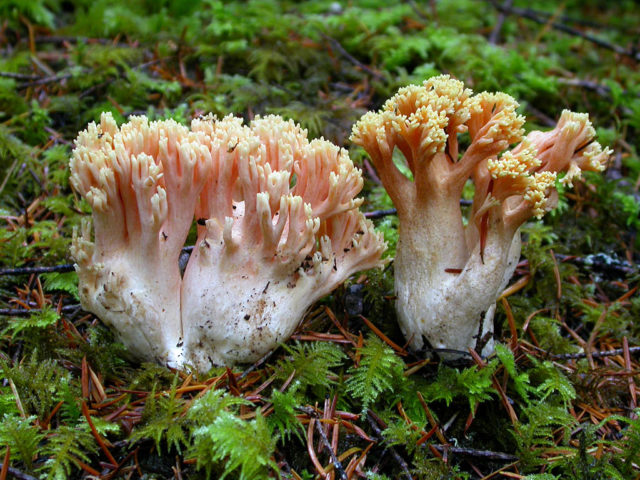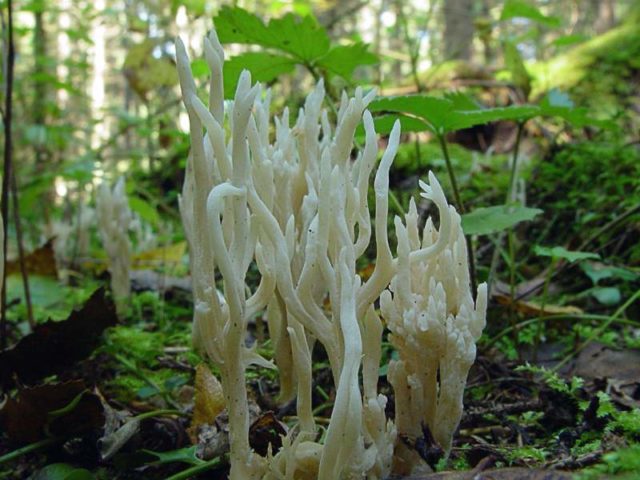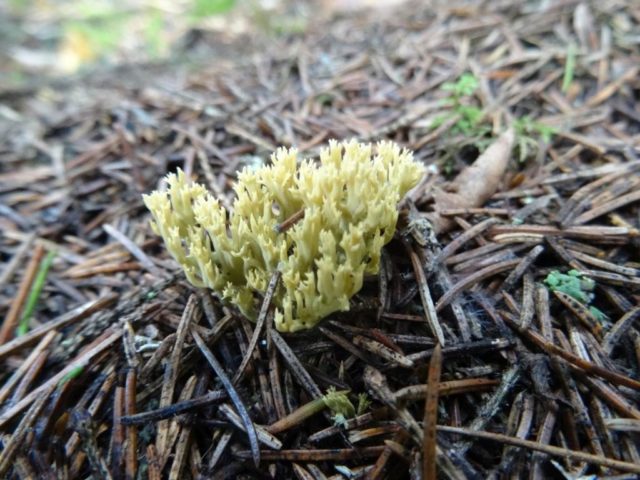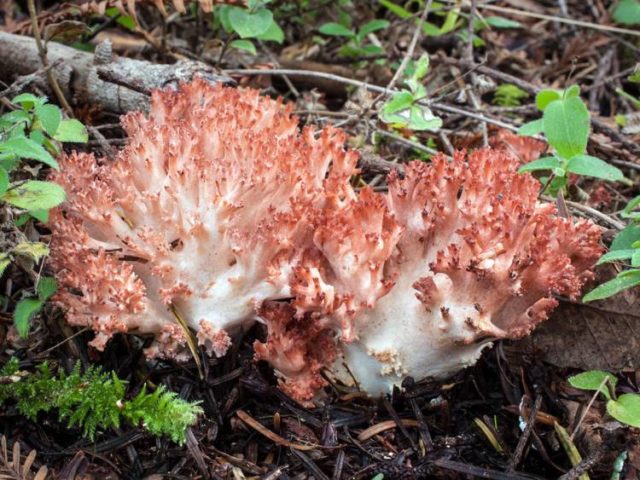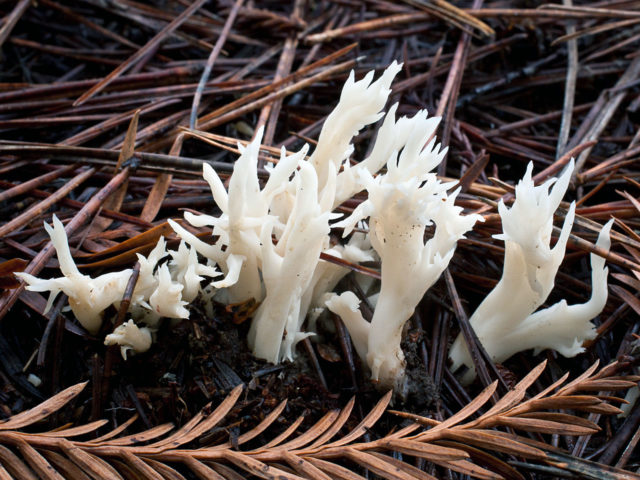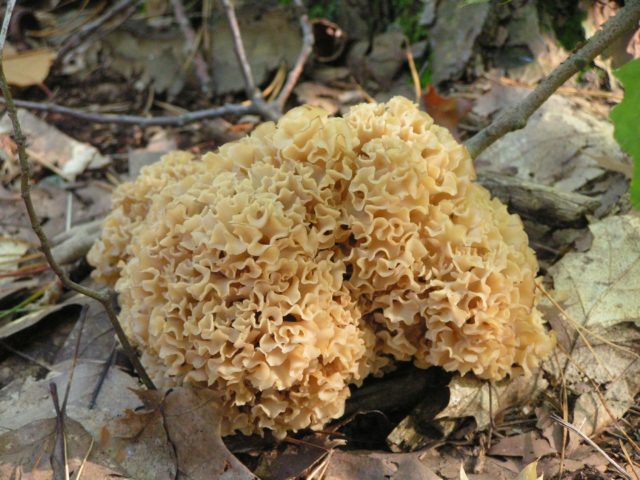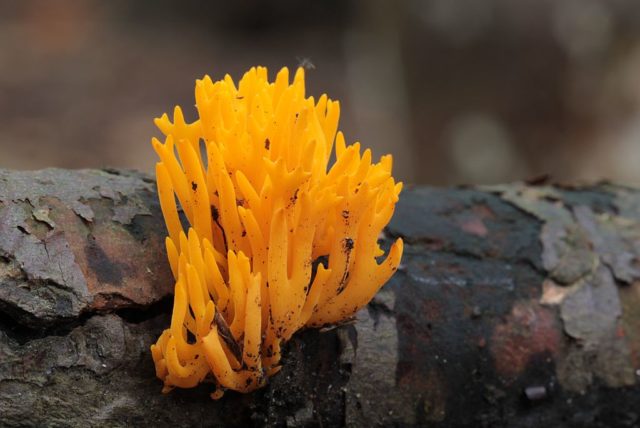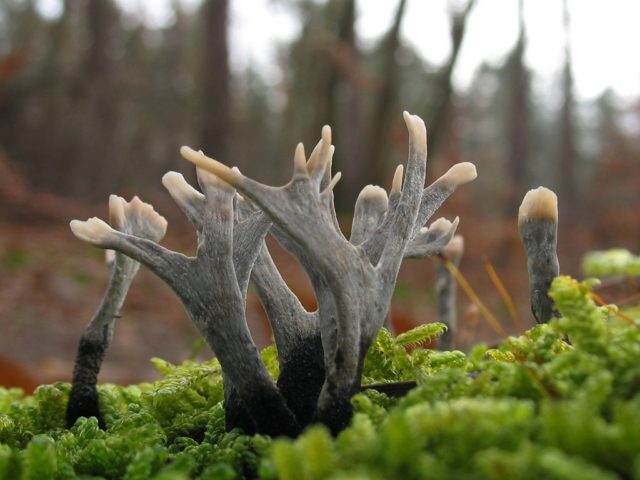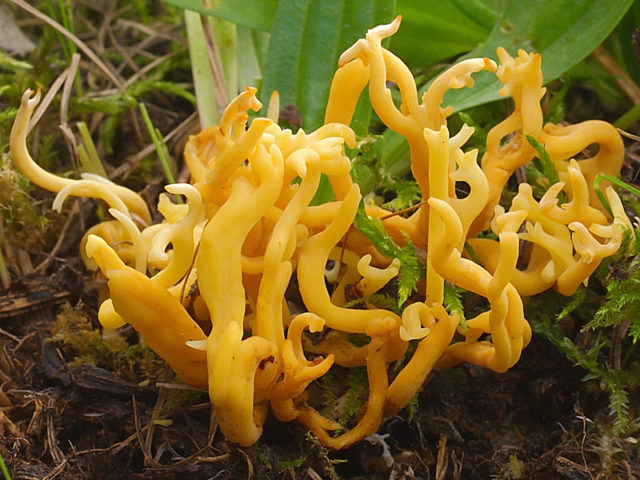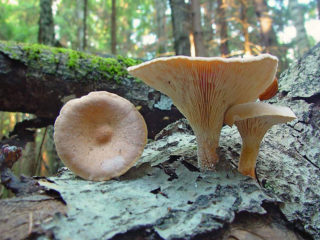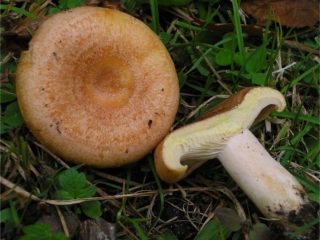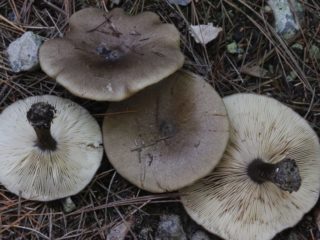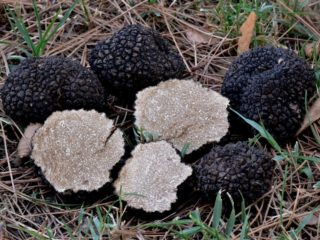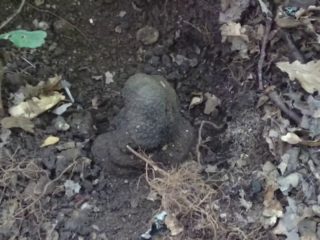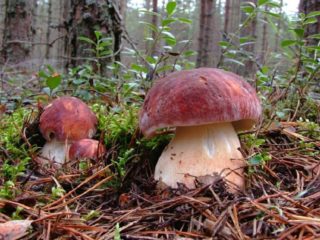Content
The coral mushroom, despite its name, has nothing to do with sea molluscs. They have only a common form, and they both grow in peculiar colonies, vaguely resembling a branched tree. There are quite a few mushrooms similar in shape to corals, and some of them can be found in the forests of Russia.
Features of coral-like mushrooms
The main feature of coral mushrooms is the structure of the fruit bodies. Their shape is not similar to the traditional one, they do not have a clearly defined cap and legs, which are found in ordinary representatives of the mushroom kingdom. Instead, the fungus forms multiple outgrowths of various shapes and colors, making it look like corals.
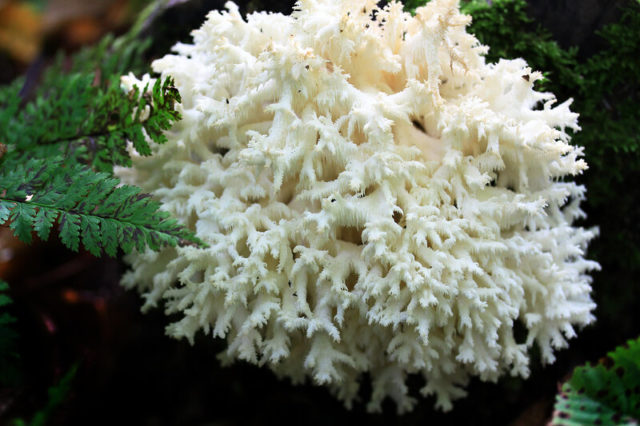
Coral mushrooms are a real miracle of nature
Where do coral mushrooms grow?
Many coral fungi are saprophytic and parasitize on dead organic matter. They often grow on fallen trees, branches, stumps, and fallen leaves. Coral mushrooms are common all over the world. Their various species can be found in the Siberian taiga and the Far East, in the forests of the European part of Russia, in the foothills of the Caucasus and on the islands of the Pacific Ocean.
Types of coral mushrooms
There are quite a few mushrooms similar to corals in appearance. They are found on all continents and in almost all climatic zones. Below are brief reviews and photos of the most famous coral mushrooms.
Coral Hericium
Coral Hericium is a rather rare mushroom found mainly in the southern regions of Russia, the Caucasus, the southern Urals, southern Siberia and the Far East. Grows in deciduous forests from late August to early October, usually grows on stumps and fallen trees, preferring aspen or birch. In specialized literature, it has a different name - coral Hericium.
It grows in the form of a bush of numerous white sharp shoots, while strongly resembling a real coral. Its thorns are rather fragile and brittle. In a young specimen, the processes are white, with age they begin to turn yellow, and then acquire a brown tint. If you press on the fruit body of the coral-shaped hedgehog with your finger, the pulp in this place will turn red. The mushroom has a pronounced pleasant aroma and is suitable for human consumption.
You can watch a description of this interesting coral mushroom in the video:
Ramaria yellow
Ramaria yellow is most often found in the Caucasus, but individual specimens can sometimes be found in other areas, for example, in Central Europe.Most often, colonies of these coral fungi grow in large groups in coniferous and mixed forests on a litter of moss or fallen leaves.
The fruit body has thick, fleshy stems, from which numerous yellowish horns stick out. When pressed, the pulp turns red. Ramaria yellow can be eaten. However, if numerous small yellow spores are crumbled from the fruiting body, leaving characteristic spots, then such a specimen is considered overripe. The smell of ramaria yellow is pleasant, reminiscent of the aroma of cut grass.
Ramaria hard
This coral-shaped mushroom has several synonymous names:
- Ramaria is straight.
- Slingshot straight.
It can be found throughout the Northern Hemisphere, from North America to the Far East. Most often, it grows in coniferous and mixed forests with a predominance of pine and spruce, parasitizing on dead wood and rotten stumps.
The mushroom has a large fruiting body with numerous branches growing upward, almost parallel to each other. Moreover, their height does not exceed 5-6 cm. The color of the fruit body has various colors, from yellow to dark brownish, sometimes with a lilac or violet tint. With mechanical damage, the pulp becomes burgundy red. Straight catfish is not poisonous, has a pleasant aroma, but is not eaten due to its sharp bitter taste.
Ramaria is beautiful
Ramaria beautiful (beautiful horned) is found mainly in deciduous forests of the Northern Hemisphere. The colony of these coral mushrooms resembles a low, up to 0.2 m tall, bush. Young ramaria is beautifully colored pink, later the dense fleshy stem of the fruiting body turns white, and the numerous processes become pinkish-yellow at the top and yellowish-white at the bottom.
The pulp of the mushroom turns red at the break. It does not have any pronounced smell, and it tastes bitter. This species is not eaten, since it causes intestinal upset with all the signs of poisoning: pain and cramps in the stomach, nausea, vomiting, diarrhea. At the same time, fatal cases after eating beautiful ramaria were not recorded.
Tremella fucus
Due to the very original appearance, the fucus tremella has a lot of synonym names:
- The trembling is white, or fusiform.
- Ice (snow, silver) mushroom.
- Snowy (silver) ear.
- Mushroom jellyfish.
In Russia, this coral-like species was found only in the Primorsky Territory. The main area of its growth is subtropics and tropics. Under natural conditions, fucus tremella is found in Asia, Central America, on the islands of the Pacific Ocean. Most often it grows on fallen decayed trunks of deciduous trees.
Despite the jelly-like appearance, the consistency of the mushroom is quite dense. The fruit body is slightly whitish, almost transparent. Dimensions do not exceed 8 cm in width and 3-4 cm in height. Tremella fucus is edible, it is recommended to boil it for 7-10 minutes before eating. In this case, the volume of the fruiting body increases by about 4 times. The pulp is tasteless, practically has no aroma.
Clavulina wrinkled
Clavulina wrinkled occurs naturally quite rarely, mainly in temperate latitudes. Prefers coniferous forests. Usually occurs in autumn, in September-October.
The fruiting bodies of wrinkled clavulin are irregular, elongated, weakly branched processes of white or cream color, growing from one base, which is darker in color. The pulp is almost odorless and tasteless. This mushroom is edible, after preliminary boiling for 10-15 minutes it can be eaten.
Feoklavulina fir
Fir feoklavulin is also called fir or spruce slingshot, or fir, or spruce ramaria. It is found in many regions with a temperate climate. Grows under coniferous trees, on fallen needles.
The colony forms numerous, well-branched outgrowths strongly resembling corals. The color of the fruit bodies has various shades of green and yellow, olive, ocher. When pressed, the pulp darkens and becomes greenish-blue. The spruce horn smells of damp earth, and its flesh is sweetish with a bitter aftertaste. In various sources, the mushroom is indicated as inedible (because of that bitter aftertaste) or conditionally edible, requiring preliminary boiling.
Horny horned
The ungulate horned has another name - uviform ramaria. Grows in mixed or coniferous forests, is quite rare. The fungus is a highly branched coral fruiting body with many thick shoots. Can reach 15 cm in height and the same size in diameter. The fruit body is white; with age, the tips of the processes begin to color in ocher, pinkish or brown tones.
The pulp is white, brittle, watery, has a pleasant taste and aroma. At a young age, ungulate horned can be eaten.
Clavulina comb
In specialized literature, this white-colored coral-like mushroom can be found under the name clavulina coral or crested hornbeam. It can be found in late summer or early autumn in temperate deciduous, coniferous or mixed forests. There it usually grows on fallen leaves and needles, as well as on mosses in the vicinity of birch, with which it often forms mycorrhiza.
Fruiting bodies of clavulina comb resemble bushes up to 10 cm high with pointed branches and flat combs. At the base of the mushroom, you can sometimes distinguish a thick, low leg. Young clavulina comb is completely white, with age acquires a yellowish or cream color. This species is not eaten because of its bitter taste, although in some sources it is classified as conditionally edible.
Sparassis curly
This coral mushroom has many other names: curly dryagel, mushroom cabbage, upland cabbage, hare cabbage. Its leg is deep in the ground, above the surface there is only an extensive curly yellowish waxy "cap" consisting of many flat branched wavy combs. The mass of the aboveground part of the fungus can reach several kilograms.
This coral fungus can most often be found under the pines, with the roots of these trees it forms mycorrhiza. The pulp of curly sparassis has a good taste and aroma. You can eat this mushroom, it is quite edible and quite tasty, however, due to the peculiarities of its structure, it takes a long time to rinse it and clean it of debris stuck between the scallops. It is advisable to use young specimens for culinary purposes, since with age, a noticeable bitterness appears in the taste.
Kalocera sticky
The fruiting bodies of this coral fungus are thin single shoots up to 5-6 cm long, pointed or forked at the end. Kalocera sticky grows from mid-summer to late autumn on old rotten coniferous wood. Sprouts are bright yellow, waxy, with a sticky surface. The pulp does not have a pronounced color and odor, brittle, gelatinous.
There is no information about the edibility of gummy calocera, so it is considered inedible, so to speak, by default.
Xilaria hypoxilone
In everyday life, xilaria hypoxilon is often called deer antlers due to the similarity of shape, and in English-speaking countries - a burnt wick, since the mushroom has a characteristic ash color. Fruit bodies are flattened, have several bent or twisted branches. A distinctive feature of this coral fungus is a black velvety color, however, due to the many white spores, the fruit body looks like ashy or floured.
This coral mushroom grows from late summer to frost in deciduous, less often coniferous forests, preferring rotten wood.Fruit bodies are dry and rather tough, therefore they are not eaten.
Horn-shaped hornbeam
The fruiting bodies of the horn-shaped horn-shaped plant resemble bright yellow twigs sticking out of the ground, sometimes with orange tips. Often this mushroom grows on rotten wood, litter of fallen branches and leaves, rotten stumps. It can be found from late summer to mid-autumn in mixed forests.
The flesh of this coral mushroom is brittle, does not have a pronounced color and smell. In different sources, horn-shaped horned horn is indicated as conditionally edible or inedible. In any case, it has no nutritional value and is more interesting as a visual object.
Pale brown clavaria
The fruiting bodies of the pale brown clavaria resemble the sprouts of a fantastic plant. They are very beautiful in color, from bluish to amethyst and purple. The fruit body of the fungus consists of many branches up to 15 cm long, growing from a massive base. Clavaria pale brown occurs from mid-summer to September inclusive, mainly in coniferous forests with the inclusion of oak.
In many countries, this type of mushroom is ranked as specially protected. They do not eat it.
Is it okay to eat coral mushrooms
Among the many coral mushrooms, there are edible, inedible and even poisonous ones. Most of them do not represent significant nutritional value, with the exception of some that have good taste and aroma. Certain types of coral mushrooms are even grown artificially and are used not only in cooking, but also for medicinal purposes.
The benefits and harms of coral mushrooms
Like any forest mushroom, many edible coral species contain many beneficial substances for human health. These are many different types of amino acids, vitamins A, B, D, E, trace elements. There are types of coral mushrooms that are grown exclusively for medicinal purposes. It is a fucus tremella, or snow mushroom, used in traditional oriental medicine.
It is used in the treatment of the following diseases:
- Tuberculosis.
- Alzheimer's disease.
- Hypertension.
- Gynecological diseases.
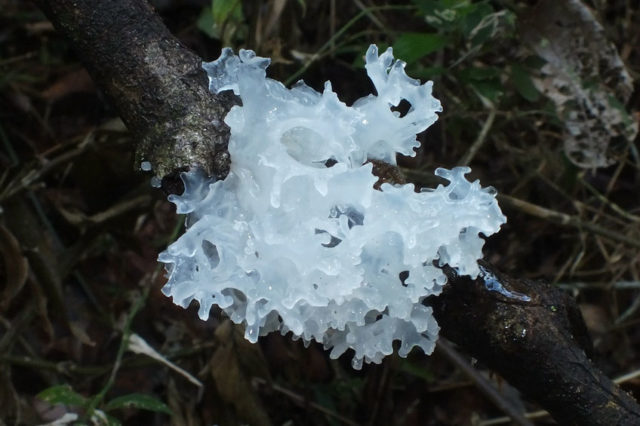
Fucus tremella has been cultivated in China for over 100 years.
However, eating coral mushrooms can have negative consequences. It is not recommended to use them for women during pregnancy and lactation, and children under 3 years of age are also contraindications. Do not forget that mushrooms are a rather heavy food, and not every stomach will be able to cope with them. Therefore, sometimes their use can cause intestinal disorders. There is also an individual intolerance to fungi, which is a feature of a particular organism.
Conclusion
Having found a coral mushroom in the forest, it is not always worth cutting it. In wildlife, these species look very attractive, while the nutritional value of many of them is highly questionable. Do not forget that some coral mushrooms are protected objects and it is forbidden to collect them. Therefore, it is better to take a beautiful photo and limit yourself to this, and use other types for culinary purposes.
